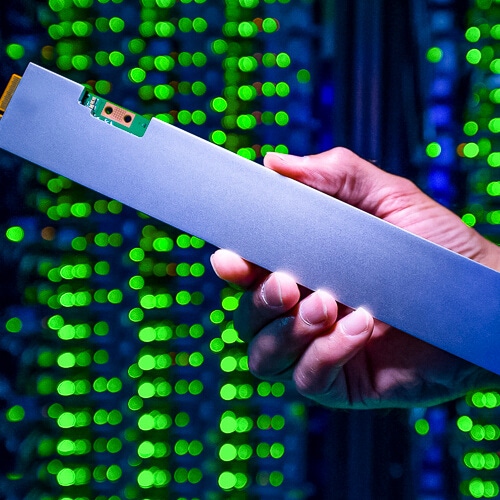After an April bounce driven by more homeworking thanks to COVID-19, the US chip giant has finally been hit by customers' cost-cutting, despite cloud growth.

Look back to April and Intel seemed to be doing so well. Growth in home working and e-learning, as well as videoconferencing – pretty much thanks to COVID-19 lockdown measures – gave Q1 figures a nice healthy sheen. Q2 wasn't too bad either.
Save for a modest pick-up at Intel's PC-centric business and some cloud revenue growth, though, and Q3 was a turn for the worse.
Figure 1:  Data driven decisions: As the coronavirus pandemic slashes business spending, so Intel's profits have taken a hit. (Source: Intel Corporation)
Data driven decisions: As the coronavirus pandemic slashes business spending, so Intel's profits have taken a hit. (Source: Intel Corporation)
Earnings-per-share, at $1.02, was down 25% year-on-year.
It's not hard to imagine investors choking on their cornflakes when the news broke. Intel's share price belly-flopped by more than 10%.
Chips are down
Intel tried to put a positive spin on Q3 saying that revenue, although down 4% year-or-year, to $18.3 billion, was "above July expectations."
In July, however, expectations were low. That's when it said that, due to manufacturing delays, its next-generation of microchips was six months behind schedule.
But other and more immediate factors help explain why Intel's data-centric business took such a massive Q3 hit, which saw turnover at Data Center Group (DCG) – a star performer in recent quarters – fall by 7%, year-on-year, to $5.9 billion.
In an interview with Reuters, CFO George Davis pointed out that a tightening of belts and growing demand for lower-priced chips was dragging down margins, and that these emerging buying trends were being felt at DCG.
Spending by government and business customers plummeted 47%, year-on-year, after two quarters of more than 30% growth.
Gross margin for Intel's entire operations, year-on-year, fell from 58.9% to 53.1%. Net income over the same period dropped 29%, to $4.3 billion.
Not all doom and gloom
Intel reported that cloud revenue, as part of DCG, grew 15% year-on-year. More demand for home working and e-learning helped here. Mobileye revenue also returned to growth in the third quarter as global vehicle production improved.
Want to know more about cloud-native networks and NFV? Check out our dedicated cloud-native networks and NFV content channel here on
Light Reading.
The PC-centric business was up 1%, year-on-year, thanks to "continued notebook strength to support the work- and learn-at-home dynamics of COVID-19."
Earlier this week, Intel agreed a $9B sale of its NAND busines to SK Hynix. The US chip giant said it would transaction proceeds to focus on AI, 5G networking and what it calls the "intelligent, autonomous edge."
Related posts:
— Ken Wieland, contributing editor, special to Light Reading
About the Author(s)
You May Also Like











